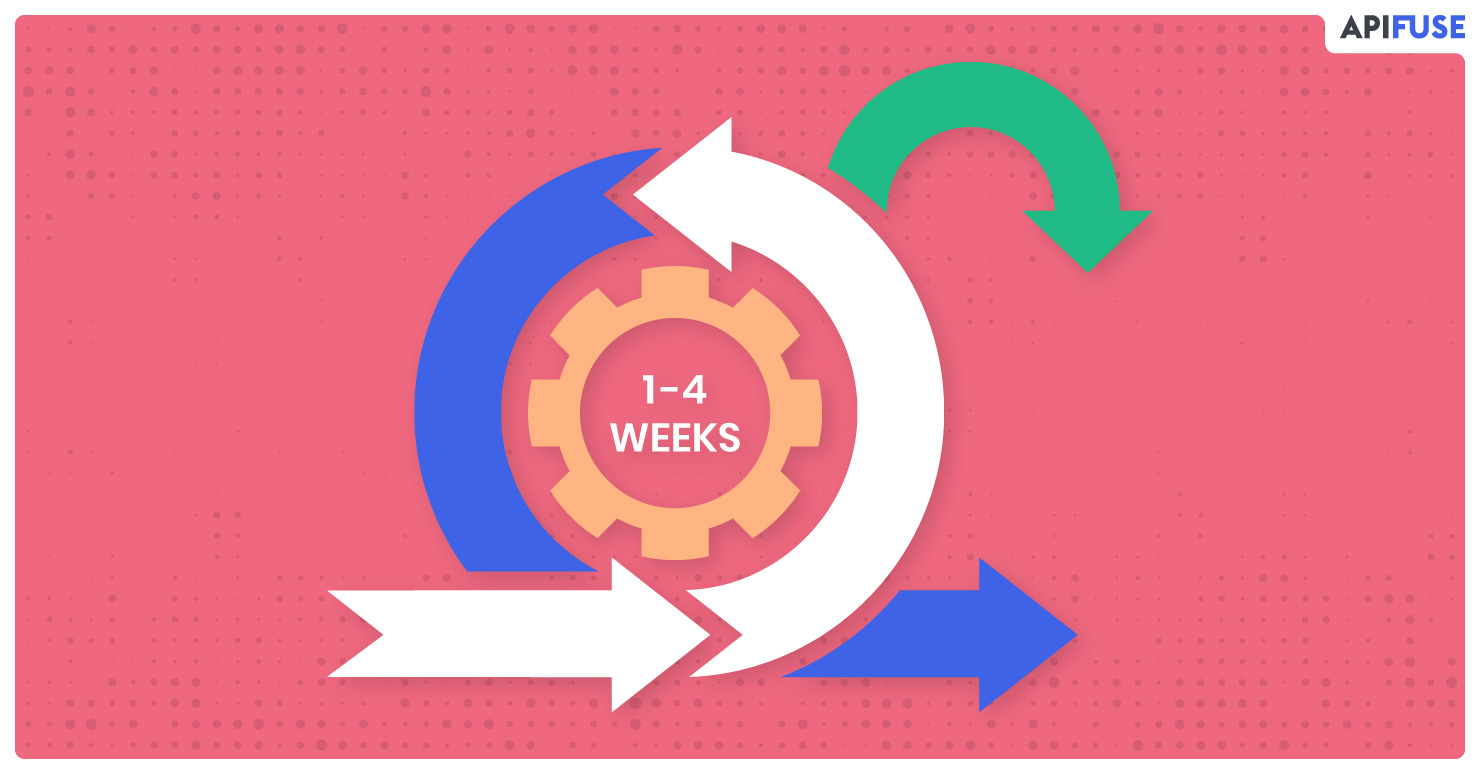The fundamental goal of SaaS development is to ship a working application regularly and swiftly. How do you achieve this exalted objective?
You use an iterative and incremental agile approach. When teams work in short, repeatable sprints, they’re able to deliver new features and functions.
For product managers, it means knowing how to manage a sprint successfully. With that in mind, we dive into sprint best practices that enable your development team to work more effectively and ship out a function that end-users actually require.
What is a Sprint?

A sprint is a technique utilized in Agile and Scrum development methods. It helps break down a massive project into smaller and manageable parts. So, sprint is an iteration of work with a fixed length.
The length of the sprint can vary from 1 week to 4 weeks. But all sprints have the same time-box. Once you pick an iteration length, stick to it. It’ll make your planning more precise. But when sprint lengths change, it creates chaos for release approximations.
Within the fixed time, you can build functionality and test it. The goal is to complete an increment of usable and shippable work after the sprint is complete.
Don’t confuse a sprint with a release
The two are very different. A release ships a new product experience to the market. A sprint is a fixed time period within which you complete a defined set of work. Often a release is a natural consequence of a sprint or multiple sprints.
Sprint best practices to follow before and during the planning meeting
A sprint begins with a planning meeting where the product manager and developers agree on the set of work to be performed within the sprint. Typically, a spring planning meeting includes:
- Reviewing the roadmap and choosing which items in the product backlog to be prioritized collectively.
- Evaluate each work item’s technical elements to assess if it would be possible to develop it during the sprint.
- Breaking down user stories into tasks and assigning each task to particular team members.
Best Practices Before a Sprint Meeting

Start planning a sprint when the product backlog shows items sufficient enough to fill two sprints. If you plan one before, the development will suffer from scope creep. It happens when the upcoming sprint’s scope is not clearly defined, making it wide open to uncontrolled growth.
Next, do your homework before the sprint meeting – prep on what you want to achieve out of the upcoming sprint. For that, you need to refine your product backlog so that all priority items are ready.
Utilize prioritization techniques for backlog grooming. Don’t simply rely on the opinion of the highest paid person. Make data-driven decisions. Having a prepared product backlog is essential. It’ll help avoid an ineffective meeting that adds stress.
Another sprint meeting best practice is to prepare an agenda. It will keep you focused on the topic at hand and manage time effectively. Share the agenda with all meeting participants.
Best Practices During the Sprint Planning Meeting
You might take a structured and formal approach to sprint planning. Or you may opt for a flexible and informal approach. Irrespective of which method you pick, always follow these tenets.
1. Establish a goal
Create sprint goals for the entire team to follow. Establishing this also explains why the team needs to carry out a given set of work. Make sure the objective is meaningful and delivers business value.
For instance, one sprint goal could be to deliver a new feature by completing or optimizing a functionality. Another sprint goal can be to address risk and mitigate it, like finding out if users are open to sharing personal information during registration.
2. Define the set of work
Pick the high-priority items from the backlog. Break down each set of work and identify the technical tasks along with the dependencies. Before the planning meeting ends, everyone should be in accord. There should be a clear and explicit plan that you can implement immediately.
Once you’ve agreed on sprint goals and plan, do not change it. By protecting the spring from tweaks and modifications, you allow your team to work with focus.
3. Work within your capacity
At the start of the sprint planning meeting, get a fair idea of every participant’s schedule during the length of the sprint. This will tell you if the scrum master is going on vacation or a developer is busy with client meetings for most of the time.
By factoring in the work hours available for each person, you get to know the team’s net capacity. Make this capacity your guideline on how much you can commit to. Now, based on the availability of the team and the speed at which they work, plan the sprint.
4. Plan down to the hour
To make sure you don’t overstretch the team’s bandwidth, follow two rules. One, create an hourly estimate for each task within a user story. Two, keep track that the total time doesn’t fill in all the capacity.
Leave some buffer. This is imperative because unpredicted events happen all the time, and life interferes. A developer might get pulled to work on another urgent project. Someone may fall ill and be absent for a good chunk of the sprint. Or a task may take longer to complete than initially predicted.
The wiggle room you leave will mitigate any risks that arise as the sprint progresses. It is always better to overestimate the work that needs to be done than scrambling to finish all the user stories at the 11th hour.
There are two ways to ensure that you don’t overfill bandwidth. One, instead of planning for all 8 hours, plan six-hour workdays. Two, plan with the assumption that X percentage of the team will be absent.
5. Outline what ‘done’ means
When the group reviews the requirements, include the definition of ‘done’ or ‘ready’ for each task. Every participant of the sprint planning meeting should be on the same page on what ready means. Intelligibility on the definition makes delivering the work more predictable and organized. Address any impediments to accomplishing the work at this stage.
6. Create documents for each decision
Everybody remembers the same thing differently, and recollections are never in agreement. That’s why you must document each part of the sprint planning meeting. It creates a log of what was agreed on and the reason for it. Two weeks into the sprint, it’ll prevent needless misunderstanding. Make the documentation easily accessible to everyone.
Best Practices for Managing a Sprint

We now move on to tenets that product managers will find most helpful during the sprint itself, and the first is the daily scrum. This is a short meeting that people can attend standing up. The team meets at the start of the day to share what was done yesterday, what is in the books for that day, and if there are hurdles to overcome.
Create a scrum board
Visibility is crucial to managing a sprint. Create a board to track the progress of each task. Although you can plan the scrum board in various ways, these four primary categories have been found to be the most effective.
- The first column is the user stories that you’re working on in the story.
- Up next are tasks that need to be done to realize each user story but haven’t started working on yet.
- The third category is “in progress.” It shows the tasks that the team is working on right now.
- The last category is done, and it contains all the completed tasks.

You can add a few more columns to the board, but they are optional. First is blockers, which include barriers to the progress of a particular task. They need to be resolved before the team can work on a sub-task. The second is testing. Include this if the testing is in the pipeline for the specific sprint.
Entire Team Collaboration Meeting
About halfway to the sprint, hold a collaboration meeting with the entire team. It allows the members to share their progress with the whole team. The benefit is that you make adjustments before it is too late. For instance, if a developer feels that a task is taking longer than expected, everyone is apprised and can make changes accordingly.
Cultivate Autonomy in the Team
As the product manager, your responsibility is the ‘why’ – why do you need to work on functionality? You determine this with the help of users and stakeholders. Once you communicate it to the team, the best result is achieved if you let them plan and execute their tasks. Instead of controlling and micromanaging, let them be responsible for the ‘how.’
Decisions on subtasks and time estimates should be the team’s domain. It fosters ownership in members, makes them accountable, and is vital to success. Besides, they are the experts, so let them focus on it.
Sprint retrospective meeting at the end
Before the current sprint closes and you begin the next one, hold a reflection meeting. Ask the team to discuss what went well during the previous sprint. Question if adjustments would have helped the current one. Discuss what improvements can be made to upcoming sprints. By reflecting on what went right and wrong, you deflate issues that otherwise would have broken up the team.
Don’t move beyond the sprint time box
A sprint ends at the decided time, irrespective of whether user stories are complete or not. The temptation to stretch the sprint to complete a user story that unexpectedly took more time is real. Don’t cave to it just because it’ll allow you to meet the sprint goals.
It sets a bad practice of considering timeframes as flexible. Teams may end up constantly neglecting them in the future. A better approach is to discuss the issue of time during the retrospective meeting at the end of the sprint.
Vice versa, don’t cut the time box
The reverse is equally important. If all your user stories are completed, and you still have some time left in the sprint, don’t cut it. As we said, all sprints must be of the same length. It maintains rhythm. The chances are low, but if you have time at hand, add a small user story to the scope and work on it till the sprint ends.
Takeaways from Product Sprint Best Practices
As a product manager, there are endless duties that demand your attention and time. Planning a sprint may not take high-level precedence. But don’t forget you’re at the coal face of it during a sprint planning meeting. It is where you decide what jobs need to be done and what must be executed in the approaching weeks.
So, take the time to be present during the sprint planning meeting. You’ll be able to answer any questions that arise and then guide the software development team to the proper path. Also, you can ensure there is no task duplication and each member works on a unique task. Lastly, you can get verbal approval from the entire development team on the sprint’s goal and ensure a successful sprint.
API Fuse enables you to offer on-demand integrations and to rapidly respond to end-users integration requests. With our solution and range of plans, you can offer users native or custom integrations embedded directly into your SaaS app in minutes to accelerate your product roadmap and reduce technical debt. Request a demo today for more information!
